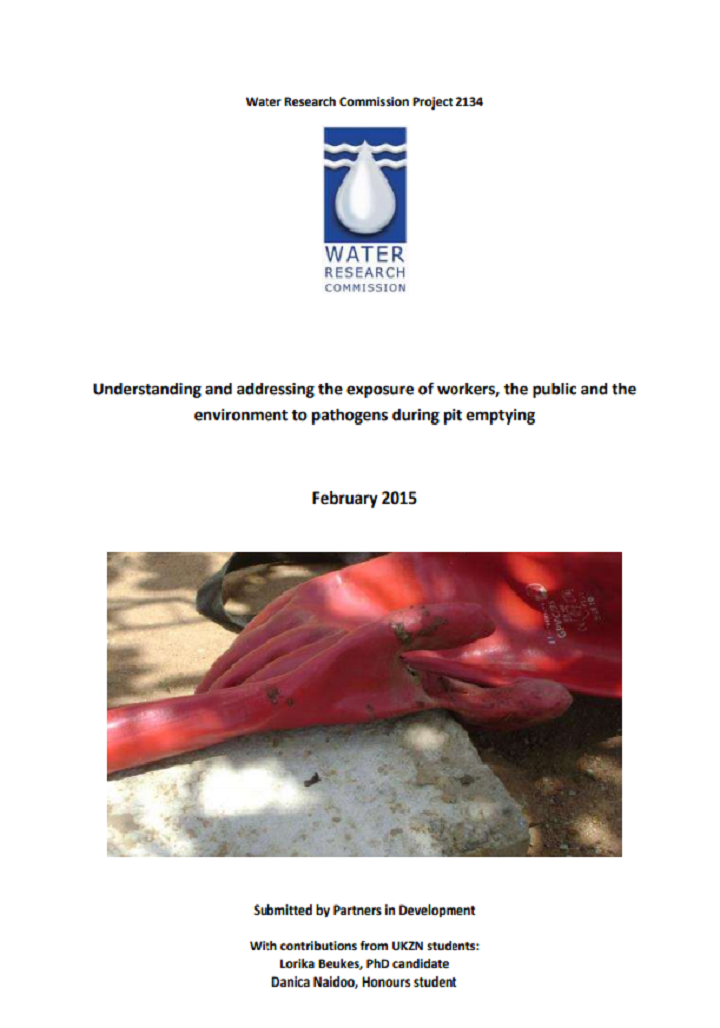Understanding and addressing the exposure of workers, the public and the environment to pathogens during pit emptying Water Research Commission Project 2134 Beukes, L., Naidoo,D. (2015)
On-site sanitation is a desirable option in many contexts and various on-site technologies have been rolled out in South Africa, as well as other countries, as a basic standard of adequate sanitation. Most on-site sanitation
systems accumulate sludge in a collection chamber which eventually becomes full and needs to be
emptied; the system can then be recommissioned for another cycle of use. If, in the process of
emptying the collection chamber, workers or the public are exposed to the pathogens in the sludge
or the environment becomes contaminated with sludge, then the most fundamental purpose of the
sanitation system has been compromised. It is therefore of paramount importance to public and
environmental health that the removal of sludge from on-site systems be conducted in such a way
that the risk of humans or the environment coming into contact with sludge is reduced as far as
possible, and that stringent measures are put in place for decontamination should exposure occur.
This document is the product of a study of the pathways of potential exposure to sludge during pit
emptying and ways to reduce risks which was conducted by Partners in Development, with
collaboration from the University of KwaZulu-Natal, on behalf of the Water Research Commission.
Bibliographic information
Beukes, L., Naidoo,D. (2015). Understanding and addressing the exposure of workers, the public and the environment to pathogens during pit emptying Water Research Commission Project 2134 Water Research Commission
Filter / Tags
Operation, maintenance and sustainable services (WG10)Peri-urbanUrban (entire city)PractitionersGuidelines and manualsEnglish
Downloads
Understanding and addressing the exposure of workers, the public and the environment to pathogens during pit emptying
Type: application/pdf
Size: 4.49 MB

Published in: 2015
Pages: 144
Publisher:
Water Research Commission
Author(s):
Beukes, L., Naidoo,D.
Uploaded by:
WRC
Water Research Commission
Location of library entry:
